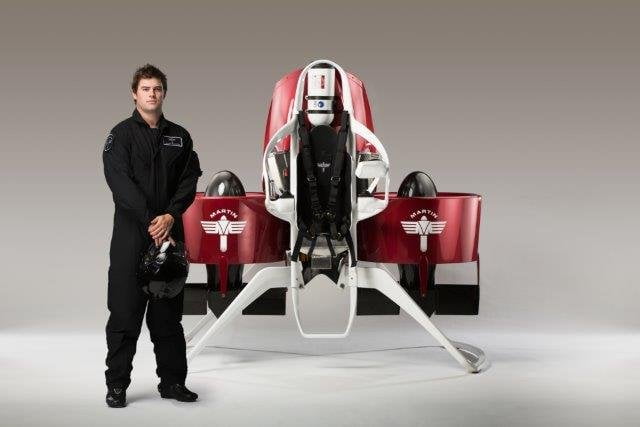Jet Packs
The history of the Jet Pack goes back to the 1920s and there have been working versions since the 1960s. But there have always been a combination of severe technical restrictions and safety concerns. The 1920s ideal of us all commuting via Jet Packs is not going to happen any time soon. And that is before we consider fuel and carbon emissions.
Martin Jet Pack in New Zealand show us what the design process leads to when we focus on safety as the priority.
Jet Pack versus Flying
I was excited to see a very different take on this. It was coming from making the flying experience as natural as possible. And it definitely isn’t for the feint-hearted. It was brought to my attention by Dr Marc Dussault, the Exponential Growth Strategist on his Personal Coaching and Mentoring blog.
So I immediately got to thinking about the design elements here and just what it takes to do this. I also had some concerns about take off and landing. But the real thrill here is the sense of really flying, not just having something support your weight while you hover.
What the original video didn’t explain is that the Jet Pack has a top speed well below an A380 and so you can only shadow the A380 when in approach mode. Certainly 10,000m up at full cruise velocity presents other challenges such as temperature, pressure, oxygen and fuel range. At least now we know how they take off. Falling out of a helicopter!
This video covers the design element and how they innovated and iterated the wing design until it was able to be controlled completely by the human body with the only control being a throttle that is rotated by the thumb. This is an excellent example of how the design is refined over time to be as natural to use as possible (at least if you are used to being a pilot).
So how do you land. They show a parachute being rolled up so my intuition is that you can’t safely land while the jets are running so you use the parachute after the fuel runs out. Which is around 10 minutes. Long enough to have a seriously good time but not practical for commuting.
And finally, a race which includes landing by parachute. This is the typical over hyped Top Gear challenge but it really shows the whole process.
Successful Endeavours specialise in Electronics Design and Embedded Software Development. Ray Keefe has developed market leading electronics products in Australia for nearly 30 years. This post is Copyright © 2015 Successful Endeavours Pty Ltd.




